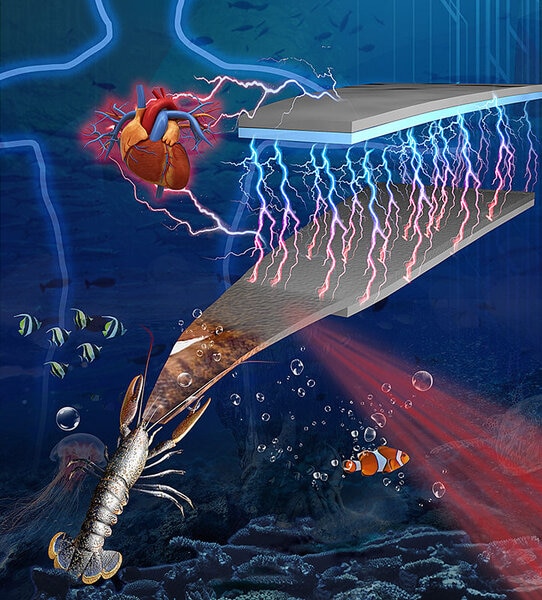Create a free profile to get unlimited access to exclusive videos, sweepstakes, and more!
Purdue researchers shell out plan to use cracked crab as a power source

Crustaceans from the bounty of Earth's oceans are remarkable creatures, and are often considered quite tasty when steamed and served with a side dish of melted butter. But now scientists at Purdue University have devised a new method to harness electricity from their crusty shells that might be used to power medical monitoring sensors, cell phone screens, and other small electronic devices.
Using chitosan extracted from the shells of crabs, shrimp, lobsters, and other denizens of the sea to allow new options for generating juice, this intriguing invention could produce an entire generation of clean, sustainable power sources. As reported in Advanced Materials, a team from Purdue University used chitosan, a natural biopolymer from marine crustacean shells, to devise triboelectric nanogenerators (TENGs) which assist in conserving mechanical energy then transforming it into life-giving electricity.
Team leader Wenzhuo Wu, the Ravi and Eleanor Talwar Rising Star Assistant Professor at Purdue’s College of Engineering, has taken an interesting approach to employing common, wasted shell material and making functional, self-powered devices. Wu claims the technology can monitor the activity of the heart or brain, aid in touchscreen technologies on medical products, and detect body movement that turns mechanical energy into electrical energy.
"We transformed chitosan, an abundant natural biopolymer from marine crustacean shells, to create triboelectric nanogenerators that can harvest the otherwise wasted mechanical energy from the human body and the environment," Wu explains to SYFY WIRE. "Such harvested mechanical energy can be used as the electric power to support the operations of wearable devices in consumer electronics, human-machine interface in virtual and augmented reality technologies, and medical sensors for monitoring the vital signs from the human."
The triboelectric effect can best be demonstrated by rubbing a balloon against your head and feeling the electrostatic charge created by the two different materials coming together. Using the abundance of chitosan in crustacean shells, Purdue researchers synthesized triboelectric nanogenerators which will allow for myriad applications in the future.
Wu and his team partnered with the Purdue Research Foundation Office of Technology Commercialization to patent this transformative technology and are now looking for partners to commercialize their technology.
(via Advanced Materials)















